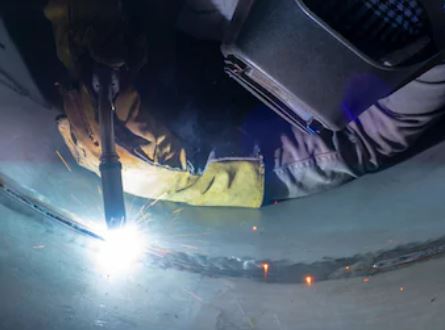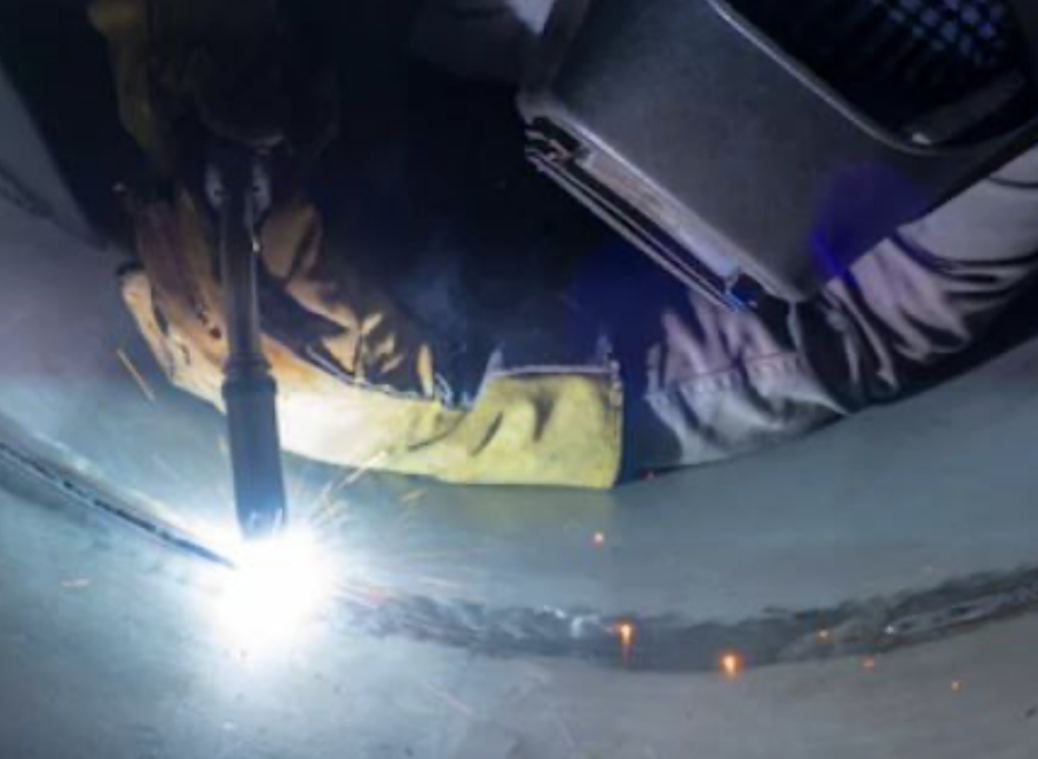Welding simply defined as a process of attaching two metals through the agency of heat or pressure in addition to the filter material. Nevertheless, there are many welding methods to fulfill the duty in this simple definition. Furthermore, the parts that are attached to each other are called parent material or base material, and additional material to form the joint is called filler or consumable. Consumables are usually selected to be similar in composition to forming a homogenous weld. Heat is supplied in various ways like electric arc, plasma arc, and laser. The weldment is referred to as a completed welded joint.
Starting to steel fabrication with the following steps, like cutting, drilling, and etching next step is generally component assembly. At this stage pursuing the right welding methods and being sure, all parts are assembled correctly and matched the desired specification is crucial. Because there is no single welding process good enough for all applications. In steel fabrication, the most important welding techniques are metal inert gas (MIG) welding, Gas Tungsten Arc (TIG) welding, and stick welding or commonly called shielded metal arc welding.
Before having more information on these welding methods, it’s important to consider these factors below when deciding on the type of welding methods for your own desired conditions:
- Material type of the workpieces
- The thickness of the material,
- The welding position,
- Time requirement
- Type of welding current source and the amount the current
- Welding position
Metal Inert Gas Welding Method(MIG)
Metal inert gas welding (MIG) is one the most extensively used welding methods due to its fast method and the initial investment cost is lower than others. The essential components of MIG welding are gas cylinder, regulator, wire feed unit, power source, MIG torch.
For a successful weld, there must be a suitable weld groove which, is an opening between two joint members providing space to contain weld metal. Also, the welding electrode that is the supplier of the current flow in this process must be clean and free of oil.
MIG melting method uses a wire welding electrode that is automatically fed through a welding gun, and this creates an arc on the workpiece. Arc generates the heat to melt the material. These steps are carried out under an inert gas for protecting the weld from contaminants in the welding environment. Common varieties of gas used for this are argon, carbon dioxide, and helium. The metal inert gas process is suitable for fusing mild steel, low carbon steel, stainless steel well as aluminum, thin or thicker plate metals.
For periodic and conventional joining applications, MIG welding allows more advantages than other welding processes which are:
It is one of the simplest welding methods to learn, even for the first time users can achieve good looking weld with less practice.
Parts to welded can be thin or thick plates
It welds all common types of materials like carbon steels, stainless steel, aluminum.
Welding positions are not a major factor as in other welding types.
Welding speed can be achieved faster than other welding types.
It offers cleaner weld due to the inert gas.

Gas Tungsten Arc Method (TIG)
Gas tungsten arc welding is one of the most popular forms of welding, developed in the 1930s and used to common in the aircraft industry. Nowadays, it is generally used for welding brass, stainless steel, gold, aluminum, bronze, and so on.
TIG welding area is safeguarding from atmospheric contamination by an inert gas much like MIG welding, the main difference between these two TIG uses Tungsten while MIG uses an electrode.
Gas tungsten arc welding uses a non-consumable tungsten electrode to obtain the weld. Electric currents work through a tungsten electrode, and thus generate the heat to melt the material base and create an arc afterward melts the wire and creates the weld pool. This welding process creates a low heat which makes it more suitable for welding thin workpieces. This type of welding commonly used for alloy steel, stainless steel, nonferrous metals such as aluminum, magnesium, and copper alloys.
This method used in aircraft manufacturing, tubing, automotive industry because of these advantages:
- Minimal eruption above the base metal
- Welds can be made in all positions.
- Better for thinner materials
- Allow to welder a better adjustment for the heat input in the welding area
- High quality work, better and aesthetic surfaces after attaching the parts
Stick or SWAW Method(Shielded Metal Arc Welding Method)
Shielded metal arc welding commonly known as stick welding is an old manual welding technique.
Stick welding can be very useful when new and more expensive types of equipment are not accessible. This technique has a consumable electrode coated in flux which prevents the arc from becoming unstable due to environmental conditions like air and wind. Because of that stick welding has been the most popular welding method for use outdoors and in drafty areas. Nonetheless, this method is limited to metals thinner than 18 gauge and needs cleaning up of the weld area due to get the slag off. This limiting condition makes stick welding more suitable for hobbyists or small maintenance works when other welding methods can be used in several industries to attach the parts.
Contrary to other welding methods shielding gas is not required for stick welding, resulting in being the most cost-effective method.
There are advantages and disadvantages to stick welding. Let’s have a look at them:
- Suitable for windy, outdoor conditions
- Unlike other welding methods, cleaning of base metal is not so important
- Least expensive to buy the equipment for stick welding
- Due to welding thin materials can be difficult, for successful results, welders must have enough experience in stick welding.
- After welding cleaning is the slag is important
- Stick is a slower method than MIG it may limit the performance
You May Be Interested:


